by meghanleborious | Apr 12, 2021 | Notes on Practice
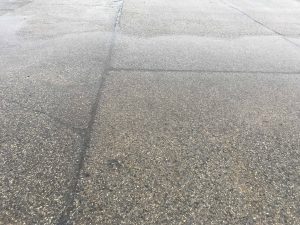 Today is my birthday, so I wanted to do all of my favorite things. After breakfast, my 11-year-old son, Simon, meditated with me for a little while, then I continued to meditate on my own. After that, I joined a zoom yoga class with a beloved master instructor who I’ve been practicing with for more than a decade.
Today is my birthday, so I wanted to do all of my favorite things. After breakfast, my 11-year-old son, Simon, meditated with me for a little while, then I continued to meditate on my own. After that, I joined a zoom yoga class with a beloved master instructor who I’ve been practicing with for more than a decade.
Next, I drove to Riis Park, a wide open beach that’s just 30 minutes away on a light-traffic-day. For much of the drive, I had to keep the windshield wipers on maximum, and I was curious about what dancing in such heavy rain would be like.
On the way, I spoke with my mom, who told me the story of my birth, as she does every single year on my birthday. The details of the story change, but the main theme is always the same. “You are loved. You have always been loved. We loved you before you were even here.” I always feel my heart rise up with a tide of tears. Some years I’ve suffered in the face of this love considering my own self hatred, but this year I said, “Tell me about how tiny I was again and what it was like when you first saw me.”
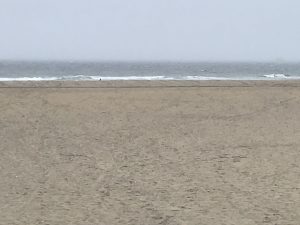 Arriving at the beach, I sat in the parking lot, writing a list of intentions for the year, and also for the new moon, which happens to fall on my birthday. The one that I liked the best this time was, “Set free what is no longer now.”
Arriving at the beach, I sat in the parking lot, writing a list of intentions for the year, and also for the new moon, which happens to fall on my birthday. The one that I liked the best this time was, “Set free what is no longer now.”
Simon had loaned me his waterproof spring coat; and I pulled up the hood and tied the strings around my neck. Droplets hitting the hood kept up a constant pattering sound. I could feel the raw air on the inches of ankle left bare by low socks.
The horizon was obscured by white mist as I made my way across the wide, wet beach. The waves were powerful but the tide was low, leaving a wide section of packed sand for a dance floor. Rain seemed to be coming in hard from the side, and the wind pushed against me almost parallel to the water.
A lone pair of people and a dog were visible in the distance when I first arrived, but before long I was totally alone. Still with the hood tied under my chin, I began to move in big arcing loops, enjoying the pull of gravity as I ascended and descended the steep slope by the water’s edge. A whole rush of words, bits of conversations, and fragments of experiences from the week and month came streaming along. Since I was alone, I sang loudly, moving from song to song as they popped up in my head, continuing to move in big circles. I also repeated the intentions from the list I had written in the car, offering them to the dance and trusting its power, repeatedly saying, “Set free what is no longer now.”
Following this flowing chapter, this opening act of my personal dance, Staccato began to catch in my throat and hips. I let out several cries as I sank low, grateful I could let my voice fly to the wind without fear of being a spectacle.
Before long Chaos moved me into energetic space; and I was coiling and spinning, moving closer to the ended waves, giving attention to the heaving sea as it rose as form then broke apart again.
Lyrical backed me away from the wind, rising onto my toes, arms raising up, and turning my face toward the sky. Wisdom poured through, reminders from the universe about my place in things, about letting go of the small stories that keep me afraid and separate. And gratitude came pouring out. Gratitude for this life, for my work, for my son and family, and for the many blessings I’ve experienced.
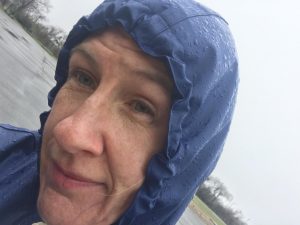 There was a lot of crying today. Even from just the past week, there is so much that needs to be processed, integrated, and healed. In a way, the path of a life is a million wounds and a million healings. But I guess that’s only if we’re lucky. I guess that’s only if we are here for it, if we can set free what is no longer now, keep moving with what life brings us, and keep finding new ways to dance.
There was a lot of crying today. Even from just the past week, there is so much that needs to be processed, integrated, and healed. In a way, the path of a life is a million wounds and a million healings. But I guess that’s only if we’re lucky. I guess that’s only if we are here for it, if we can set free what is no longer now, keep moving with what life brings us, and keep finding new ways to dance.
April 11, 2021, Brooklyn, NY
This blog consists of my own subjective experiences on the 5Rhythms® dancing path, and is not sanctioned by any 5Rhythms® organization or teacher.
by meghanleborious | Jul 19, 2020 | Notes on Practice
This is where indigenous Podunk people once lived during cold months, where my grandfather loved to fish, and where I’ve brought my ten-year-old son, Simon, to experience the changing seasons more closely. For months, since Simon and I have been staying with my parents in northern Connecticut, I’ve run nearly every day in the woods by the Scantic River, then found a place to do the 5Rhythms dance meditation practice. I’ve loved the flowing river, the soft ground, and the shaded seclusion.
Like many practices, it started with following my intuition, then as it felt right, turned into a daily (or nearly daily) practice. But as the river got summer-low and stagnant, I started to feel less inspired. Still I ran and danced there almost every day, and still I was grateful for this beautiful place.
For a week or more, dance didn’t feel good. Most of the time, dance feels good. Even when I’m coping with a lot of anxiety, I can often let it go and let go in movement. Sometimes it’s even cathartic. But at times, I don’t feel any better after dancing than I did before I started, and I stay mostly flat.
I was on such a streak.
Thankfully, after over a decade of practice, I know what to do when it doesn’t feel good: keep practicing regularly, embrace whatever arises (even if it sucks), and remind myself that the magic always comes back eventually.
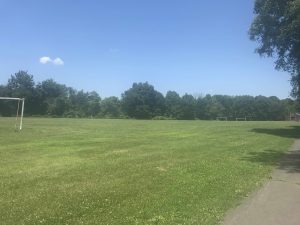 Yesterday, instead of turning right to head down the big hill to the woods and river, I turned left instead. This time, I ran one house down, then turned into the athletic grounds behind the town’s middle school. Here, rather than running in the dense, enclosed woods, I ran on a half-mile gravel track surrounding a wide open field. I relaxed, pausing frequently to gaze up and take in the open sky. After the first loop, I changed direction, so more of the time I would be facing the widest open space.
Yesterday, instead of turning right to head down the big hill to the woods and river, I turned left instead. This time, I ran one house down, then turned into the athletic grounds behind the town’s middle school. Here, rather than running in the dense, enclosed woods, I ran on a half-mile gravel track surrounding a wide open field. I relaxed, pausing frequently to gaze up and take in the open sky. After the first loop, I changed direction, so more of the time I would be facing the widest open space.
Practice is always a mix of discipline and flexibility. The teachings of Staccato teach us to apply intention and energy to our work, including holding our own feet to the fire in daily practice. The teachings of Flowing support us in following our intuition, and in being flexible and attentive to our own needs. As the Buddha taught, if practice is too loose, we could say with only flowing energy, it will not be effective. If practice is too rigid, we could say with only staccato energy, it will not be effective. It takes a balance of both of these energies to avoid stagnating or developing unskillful habits.
After four loops around, I decided to dance a 5Rhythms wave – which is to move in sequence through each of the 5Rhythms of Flowing, Staccato, Chaos, Lyrical, and Stillness.
I found a tucked away inlet of cut grass, off to the side of the field where there was a small platform for outdoor exercise like sit-ups. I stepped up onto it, immediately liking the low friction feel of the wood-like material, and sinking into the circling movements of Flowing. I sank low and swung my hips over the edge, moving in a big arc, curving up onto one heel and back in the other direction, with a gesture like an athlete coiling a heavy discus.
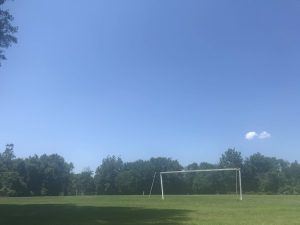 I felt no rush to move into the second rhythm of Staccato, instead feeling like I could keep doing this gentle circling all day. Eventually, the rhythm of Staccato did break through just as the humidity shifted to a thick, slow rain that rattled the leaves like a percussion instrument. The sky remained light and blue on the other side of the field as I moved with sharp edges and exhalation, sinking low in the hips, emphatic with my elbows and the outside ridges of my hands. Next I moved in Chaos, briefly, gently, my gaze flopping around and rushing through clouds, grass, trees, my own feet, my own hands, the blue edge of sun, a bit of a house across the field.
I felt no rush to move into the second rhythm of Staccato, instead feeling like I could keep doing this gentle circling all day. Eventually, the rhythm of Staccato did break through just as the humidity shifted to a thick, slow rain that rattled the leaves like a percussion instrument. The sky remained light and blue on the other side of the field as I moved with sharp edges and exhalation, sinking low in the hips, emphatic with my elbows and the outside ridges of my hands. Next I moved in Chaos, briefly, gently, my gaze flopping around and rushing through clouds, grass, trees, my own feet, my own hands, the blue edge of sun, a bit of a house across the field.
Then, for the first time in over a week, the rhythm of Lyrical visited. Lyrical is like a bird on your shoulder. If you make a loud noise or look directly at it, it flies away. If you stay porous and move gently, it might stay there and coo, maybe even dancing along with you. I fell upward into extensions, turning my smiling face to the sky again as I raised my hands up.
For a short time I moved with everything – the spirits of the woods, the rain, the changeable sky, the breathing trees.
There was something in me that needed to let in space this time. Maybe I will return to the woods. Or maybe dancing in the field will become a new practice. I don’t take ending the woods practice lightly. At the same time, I don’t need to cling to it if it is no longer serving.
Then a jogger joined me on the other side of the field and I knew it was a matter of time before she was right beside me on the gravel track. Not wanting to shift into being verbal just yet, I climbed down from the platform and walked back home in the attitude of walking meditation, loving the sensation of each foot touching down, feeling alive and reverent.
Walking, I barely thought about the difficult question of whether or not I will send Simon back to school in September. I barely thought about my own teaching job, and what the school’s hybrid teaching plan might look like. About the new science that’s showing that COVID may have significant long-lasting impacts and that people who die of it are riddled with blood clots. About how children may be vulnerable. About how having the disease once may not provide immunity. Notably, I barely thought about our foul, inept, self-serving president and all the blood he has on his hands. And I even took a break from thinking about the intricacies of racism in our country, and what would need to happen to eradicate racism, patriarchy, and all oppression, including what I could personally do to have an impact.
I just walked slowly along, stopping once to eat a wild blackberry, then making my way back home.
Individual practice is keeping me alive. Truly. But at the same time I recognize the need for collective work that goes beyond just working on ourselves. Inner work is absolutely critical, but if practice is just there to make us feel good, then it’s not practice. It is actually a sedative, a conditioned habit.
Practice is a tool to pierce through layers of illusion to the radical, shining truth, even if it is politically inconvenient, uncomfortable, challenges our personal views, or challenges existing power structures. I’m extremely grateful when practice feels good, but hope I can push myself toward the truest truths, even if it doesn’t feel good sometimes.
Later in the day, I brought speakers outside and danced in the yard. To my surprise, I again moved with engagement. In Flowing, I moved with a circular swing in the yard. I dipped low, rolling it around my hips and moving in a big circle around it, at times moving toward it and falling, then rising and arcing away. At first, my arms followed my body like sea kelp, but soon, I started holding the swing and pulling it to its curving edge, then falling back into circling. In Staccato, I stayed in the shade of a big maple tree, feeling creative and vibrant, finding new ways to rise and fall, advance and recede, and work with the kinetic energy of the moving hips. Chaos challenged me to explode and release, and I let my head go and moved in a fast matrix, going all out. I was surprised that I had two long Chaos songs in a row in the playlist, but decided to go with it, telling myself to release and release and release further.
A chaos-lyrical song started and I bounded over to the computer to change it, putting on one of my all-time favorite tracks instead of the one I had planned. Lyrical overtook me; and I found a whole new category of movement. This time, pointing a leg and rushing into one direction while leaning back from it, and somehow a wild skittering with the other leg covering 10 or 15 feet in a gushing, joyful gesture, then bounding, leaping and twisting, all with my face tilting upward, smiling.
I have no idea what’s coming, but I suspect that for some of us, this might be a blessed interlude, a raging storm’s quiet eye. I hope I can settle into it, be available for joy if it visits me, step up to help dismantle injustice in ways that are skillful and collaborative, and love the people around me to the best of my ability.
That’s the best I can do for now.
June 16, 2020, Broad Brook, Connecticut
This blog consists of my own subjective experiences on the 5Rhythms® dancing path, and is not sanctioned by any 5Rhythms® organization or teacher.
by meghanleborious | Jun 30, 2020 | Notes on Practice
I lost my way into the writing for a moment.
I just didn’t know what to say. Or what I could say that would be relevant at this time. Just writing about my own personal practice seemed so self-centered, given all that’s going on in the world. And who am I to speak on matters of such grave import? Then again, who am I not to?
The only thing I’m an authority on is my own body–though even my body is riddled with the expectations and representations of the societies it exists in–and I hope this humble material can lead me to deeper wisdom, that extends beyond my own small experience.
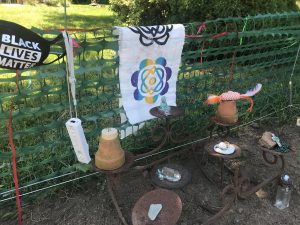 Nearly every day I bring the speakers outside and do the 5Rhythms dance and movement meditation practice on the grass in the backyard of my parents’ house, where my ten-year-old son, Simon and I are staying temporarily.
Nearly every day I bring the speakers outside and do the 5Rhythms dance and movement meditation practice on the grass in the backyard of my parents’ house, where my ten-year-old son, Simon and I are staying temporarily.
Most days I’m amazed that I can dance for over an hour, hard, totally on my own, and stay engaged, often joyful, sometimes fascinated, and sometimes even subsumed. Yesterday after a long wave, I lay down on my back and watched the few scant clouds move across the open sky.
In the morning, I was experiencing almost unbearable anxiety, to the point that I was pinched and dissociative. Whenever things are ok at work, I feel like I have it all figured out and it will be smooth from now on. But occasionally something will blindside me, as happened over the last few days.
I was managing the resulting feelings, but then I let myself drink too much wine, perhaps craving a break from anxiety, which put me over the edge the next day. I struggled to be present with Simon, and found it hard even to soften in a hug with him, which of course made me feel more anxiety, along with its near cousins: shame and guilt.
In the backyard, I stretched my legs briefly as Flowing music started. Then I replayed the same song when I got to my feet, calling my attention down, and bringing energy up from the ground. It took a lot of discipline and patience to even begin to settle in. By the second song, I was moving more freely and pulling in big lungfuls of air with each breath.
As the music moved into Staccato, I recalled a distant memory. It was very hot and part of my dance floor was in full sunlight, so I wore a baseball hat. When I first fell in love with dance, it was in underground clubs and parties in the 1990’s. The flashiest dancers in these venues were guys from the house music scene, with ultra-wide jeans and baseball caps; and this was where I cut my teeth.
I never wore a cap myself, but I picked up some of their gestures in mirroring and competing with them; and sometimes they rise up out of my body’s memory. I totally entertained myself with this, first playing directly with the cap, noting the gestures of my elbows, shoulders, hands and knees, the angularity that rose up, and the way of moving the diagonal planes of my body. Then I took the cap off and continued to play, watching my own shadow for information and entertainment. I thought about how I might teach this idea, or better, how I might use this idea as an example for how to tap into the body’s personal experiences as language for the narratives we create in moving.
The longest part of the wave was Staccato, and I settled in for a slow build on this hot, dry afternoon, visiting many of my favorite tracks, finding varied expression and enjoying increased flexibility and range of movement because of more time to stretch and do yoga lately. In one song, I lifted one leg up, open to the side, and experimented with spinning around like a young tap dancer I’d seen in a video. In another I turned my knees in, bouncing them together and raising my heels to the sides while I leaned forward and rocked my hooked elbows.
Chaos found me more tired than usual. Because of anxiety, I’d only slept a few hours the previous night and it was starting to catch up to me. I sunk low into my hips during a track that straddled Staccato and Chaos, whipping the spine from the hips through the crown of the head. Instead of expanding into the rest of the yard during Chaos, as often happens, I stayed relatively close to my little dance floor, a blue outdoor rug, but still allowed myself to move vigorously, releasing the head and trying to let go of the stories that were plaguing me.
In Lyrical, I moved with relief, grateful for release from the anxiety I started with.
New factors kept triggering anxiety, though. It wasn’t until today when I went for a run in the woods and danced by a river, with the first rain of two weeks blurring the edges of everything and falling in a soft hush, that I could see it as a gift–an opportunity to work with my patterns–even as the anxiety continued to spike with a rush of chemicals releasing in the diaphragm, then abating again.
I saw how I got tight and checked out when very difficult and painful feelings came up, not fully listening to Simon as he shared stories of his day, and unable to clean, organize, or communicate effectively. I saw how I hunched my shoulders, crinkled my forehead, and shortened my breath. I saw how I had used alcohol to help me escape, but only succeeded in making the feelings more painful.
I also saw how intensely I wanted the discomfort to end, but recognized that I could not avoid the process of reckoning that was unfolding, and determined to let it run its course.
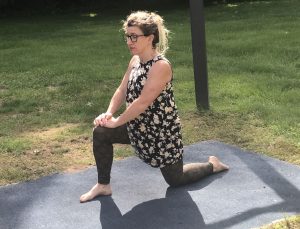 On days when I’m not dancing to music in the backyard, I’m dancing alone by the river, without music. Sometimes these waves are brief, as I often feel the pull of responsibilities at home.
On days when I’m not dancing to music in the backyard, I’m dancing alone by the river, without music. Sometimes these waves are brief, as I often feel the pull of responsibilities at home.
Today, I moved on a patch of loose sand in the middle of the path by the river. A roof of leaves mostly sheltered me from the rain, but the drops that filtered through landed on my exposed face and arms. Concentric circles from the raindrops intersected on the surface of the river. Beginning to move in circling motion, the sand churned up under my feet. Again, it took me some time to settle into awareness of the feet. Stories kept sparking and often ran for many seconds before I directed attention back to the feet, circling, and breathing in.
Staccato broke through before I actually noticed it and I explored warrior cries, delivered at different volumes and heights. Chaos came and went many times, even twice dipping me back into Flowing. In its third peak, I danced some kind of demon, my vision totally blurred, and an ardent, warp-speed side-to-side stomping that I’ve never experienced before came through. Then I leaned forward and held my arms wide and straight out, bouncing from foot to foot, my head released, in a low, weighted spin.
Then my field of vision expanded beyond the small area I was focused in. “Yes,” I said quietly, noting the green light of far away trees, the moving river, the white sky. I continued to move, more quietly now, stories still occasionally sparking but less compelling, moving closer to the river and exploring different contours of the path.
Again, it amazes me that even without music, on most days I can dance for long stretches, essentially self-generating. That as much as I’ve loved dancing in big, sweaty, loud crowds, as much as I’ve hung on the words of cherished teachers, in the end, the practice can be stripped to its bones: that a secret to being fully alive is movement, that, as Gabrielle Roth, the founder of the 5Rhythms practice said, “A body in motion heals itself.”
Eventually, movement quieted further, and I decided to do another loop of the trail in walking meditation before running back home. As before, stories kept sparking, especially ideas for how to fix the situation that was causing anxiety. But I kept returning the attention to the feet, the sponginess of my sneakers, and the sticks, rocks, grass, and soft dirt under me, noting, too, as attention shifted, tension in my jaw, water droplets on the river, a tight shoulder, a bird on a nearby branch, and again and again, the stories that kept trying to hijack me.
I still don’t know what to say, or where to begin. But I think sometimes you just have to step in, and let the world lead you.
June 26, 2020, Broad Brook, Connecticut
This blog consists of my own subjective experiences on the 5Rhythms® dancing path, and is not sanctioned by any 5Rhythms® organization or teacher.
by meghanleborious | May 25, 2020 | Notes on Practice
The hardest part of my experience right now is parenting. 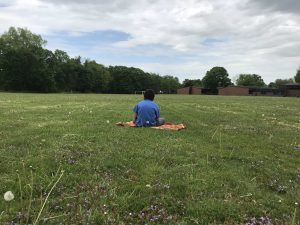
I don’t feel like I have the skill set for this. Some days my ten-year-old son, Simon, and I ricochet off of each other, caught in a cycle of reactivity. Today, he called me a “jerk” repeatedly, told me I’m “the worst parent in the world,” and told me he hates me. I said, “Sorry you feel that way.” When I asked if he preferred to go hiking or biking today, he screamed and cried at maximum volume, protesting. Sometimes I feel like he only wants to play video games (something I virtually prohibited before this time), and is trying to make life so miserable that I will just leave him to it. It’s true, too, that he is suffering with all the painful changes and uncertainty. I said, “Ok, I’m sorry you’re feeling this way. We’re leaving in ten minutes.”
And that was all just in the morning.
It hasn’t been easy to help him be active, especially since there are no other kids to wrestle or run with. Yesterday, we went to a big field with a kite, and took turns running to get it to fly. We laughed as it zigged and zagged, sprinting to avoid getting dive-bombed.
We also discovered a toad on the back deck, a phenomenon that delighted Simon.
So some days have been better than others.
For the time being, I’m parent, playmate, teacher, athletic coach, and, as he told me yesterday, “You’re my therapist, Mommy.”
Despite some nice moments mixed in with the challenging ones, by afternoon my patience was shot. I left Simon (after much coaxing) in a zoom meeting with his friends and in the care of my parents and went for a run.
I felt strong, my lungs expanded from anger, my leg muscles flushed with blood, preparing to fight or flee. Arriving at the soft trail by the Scantic River, I picked up my pace, trying to let my feet relax completely with each pounding step.
I did two fast loops, then decided to dance a 5Rhythms wave, choosing a sandy spot where I wasn’t visible to anyone. I turned in circles, gravitating to a flat spot. My brain rushed with the events of the past hour and of the day. I scanned my body, noting fire at the bottom of my esophagus, the seat of my anger at the moment. I also noticed my shoulder wasn’t moving much, and invited it into motion.
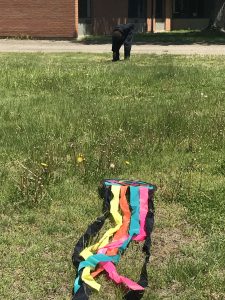 Gradually, more of my body joined the circling, and thinking started to settle down. I breathed in the anger I was experiencing, then started to breathe in the anger many parents are experiencing at this time, and to breathe out equanimity. I was practically gulping in air at this point. I also started to breathe in the fear that many parents are experiencing, and to breathe out equanimity, again. Then, I started to cry in big, jagged sobs and to wail. I realized I’m afraid that Simon will acquire habits that will lead to an unhappy life, that I’m afraid about the long-term effects of social isolation, and that I feel powerless in a situation that I very much wish to control.
Gradually, more of my body joined the circling, and thinking started to settle down. I breathed in the anger I was experiencing, then started to breathe in the anger many parents are experiencing at this time, and to breathe out equanimity. I was practically gulping in air at this point. I also started to breathe in the fear that many parents are experiencing, and to breathe out equanimity, again. Then, I started to cry in big, jagged sobs and to wail. I realized I’m afraid that Simon will acquire habits that will lead to an unhappy life, that I’m afraid about the long-term effects of social isolation, and that I feel powerless in a situation that I very much wish to control.
I stayed a long time in Flowing, and when I finally did move into the second rhythm of Staccato, I could feel myself wanting to collapse. “I can’t” my mind kept saying. This time, I really had to rely on practice. I chose directions to move into, emphasized the out-breath, and gave my attention to the hips. Still, there was something in me that wanted to crumble, and something that kept my heart from being totally open. I gave myself permission to not know what to do, but kept trying to stay alive to the woods, to the rushing current, to the blue heron that took to the sky and landed on a branch nearby.
Schedule changes, different approaches, and different perspectives I could implement to improve things came to mind.
The third rhythm of Chaos surprised me in arriving. Today, I was ardent, giving myself to the fire with a great deal of energy. My head came loose and wheeled itself around, though there was still a hint of holding in the sides of my neck. I growled–crying, spitting, sweating. I started to move into the fourth rhythm of Lyrical, then pulled myself back, acknowledging the need for letting go today, and moved a little longer in intentional abandon.
Moving into Lyrical, I said out loud, “I give myself permission to be as light as possible.” The loudness of my breath, feet, and thoughts dissolved. Now even quieter, I could hear active rustling at the heights of the trees, the river gurgling around its obstacles, and birds calling to each other.
Stillness, the fifth rhythm, comes easily in this place, and I closed my eyes, continuing to move softly, breathing in and out with everything around me.
I was called to sitting meditation and settled myself down on the clean sand by the river. Still, even after all this catharsis and sweat, my mind felt unstable. After a period, I let go of meditating, shifting into just being. At that point, my mind became very precise. I noticed a dazzle in the far woods, rippling water, a subtle muscle release in my foot, pressure on my sit bones, tension in my shoulder, a flicker of thought, breath, the light on the water, rippling water again, tension in the jaw.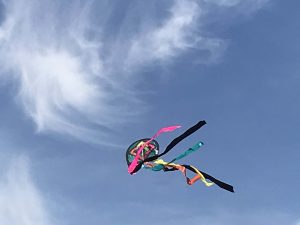
I was able to follow these shifts of attention with great agility.
Eventually, the sound of approaching hikers shook me from these depths and I set off for home, running back up the hill I ran down and returning to my parents’ house, feeling like I had a secret. The seemingly impossible challenges felt manageable again; and I had new insights about how to handle them.
When I arrived, I jumped straight into the shower, scrubbing myself down with a rough washcloth.
I reflected that I am open to working with so much that is difficult in my experience, but when it comes to parenting, there is something in me that refuses to have a growth mindset, that wants to retract, to refuse to accept that it’s both challenging and workable, and instead to shut down.
My mom came in as soon as I got out of the shower to report some challenges that had arisen while I was gone.
All of the space I had found in the woods seemed to collapse, and weight settled onto my chest again. My resolve crumbled, and I stepped back into the messy work of parenting, praying, for all the world, that I will somehow find a way, that I will stop saying, “I can’t” because there is no other option right now except “I must.”
May 23, 2020, Broad Brook, Connecticut
This blog consists of my own subjective experiences on the 5Rhythms® dancing path, and is not sanctioned by any 5Rhythms® organization or teacher.
by meghanleborious | Apr 20, 2020 | Notes on Practice
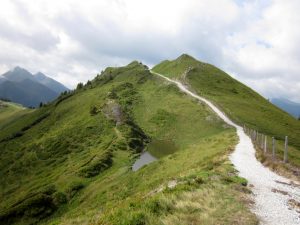 I really didn’t feel like practicing. It had already been a long day; and I had another big day coming. I was on a meditation retreat at Garrison Institute, and part of my personal practice was to dance a 5Rhythms wave, o sea, in other words, to move through each of the five rhythms in sequence. At least once a day, I tucked my socks into my pants, sprayed myself with deet, and made my way down a wooded path to the Hudson River. Because it’s my practice, even though I didn’t feel like it, I still stepped in.
I really didn’t feel like practicing. It had already been a long day; and I had another big day coming. I was on a meditation retreat at Garrison Institute, and part of my personal practice was to dance a 5Rhythms wave, o sea, in other words, to move through each of the five rhythms in sequence. At least once a day, I tucked my socks into my pants, sprayed myself with deet, and made my way down a wooded path to the Hudson River. Because it’s my practice, even though I didn’t feel like it, I still stepped in.
I began in a tiny inlet, on a beach enclosed by tree cover. In Flowing I was lackluster. I moved in circles on the little beach, cutting up the sand’s surface. In the second rhythm of Staccato I was still not really into it, determined to see the wave through, but also eager to get it over with. Then, a spark caught, somewhere in the transition from Staccato to the third rhythm of Chaos. I moved from the little inlet to an open, glacial rock that rose up over a powerful expanse of the river and moved with abandon. In Lyrical and Stillness, the world opened itself. I imagined that I sunk to the depths of the ancient river, where it was black and dense, then rose up again with its density streaming down the rock channels of me.
Sometimes practice is mundane. Sometimes it is life-changing. You never know what will happen until you step in. In 5Rhythms, there is a tradition, a benediction, sometimes expressed at the beginning of a wave: “See you on the other side.”
All of our dances, all of our practice experiences are necessary. After about two years of dancing the 5Rhythms, I went through a period of agonizingly painful dances. It lasted almost two months. Every time I stepped in, I felt terrible. I felt isolated, disengaged, disincluded, and unable to connect. It was extra painful because I’d become accustomed to the wild, frenzied release that left me whimpering and grateful, alive, full, knowing. And for this long period, it just wasn’t available.
Thankfully, by then, I had already developed a strong practice. I had already verified for myself that 5Rhythms was beneficial for me, and was worth the dedication of precious resources. If I didn’t already have a strong practice–a regular, intentional practice that was not rocked by external factors–I’m sure I would have stopped attending 5Rhythms classes. As it was, I just kept attending, noticing how I was feeling, and knowing that it would pass. Later, when I hit patches of agonizing discomfort, I would draw on this experience, reminding myself that practice would not always be pleasant, but that the periods of discomfort would pass, and would leave me with deeper faith in my own ability to stay present in the face of whatever arises.
In the simplest terms practice is something we do regularly and intentionally without being attached to a certain outcome in a given session. We show up again and again. Usually, something only becomes a practice if we have been raised with it, or we have field tested it and found it worthy of our dedication.
To me, having a 5Rhythms practice means regularly, intentionally dancing the 5Rhythms, regardless of how I feel before, during, or after. It means I don’t ask the dance to fix me in the moment, but, over time and with slow erosion, to free me from my personal prisons and to reveal the nature of reality.
When my son, Simon, was first born, I developed a practice of writing a poem a day. As is true of many practices, it started accidentally. My sister invited me to swap haiku poems for fun, and somehow I caught a little groove of poem writing. I let go of using the haiku form, and instead wrote about my daily experiences, capturing the exquisite beauty of Simon’s first months of life, including the blizzard snows that buried New York City that year, the sublimely quiet room where I sat breastfeeding him in the quietest hours of night, the silver J train sliding across the bridge in view outside the window, and how it felt to look at my tiny son’s face as he slept. And I also captured the pain of that time period, as my relationship with Simon’s father was falling apart.
After a week or two of catching an accidental groove, I started to realize it might be worth making this into a practice. So I did. Some days I wrote more than one poem, but almost every day I wrote at least one, sometimes staying up just a little bit later to accomplish this task. Sometimes the poems were mundane, sometimes they were life changing. Once I wrote. “I’m too tired to write now. Maybe if I can just hold this pen upright, the world will flow through it.”
One of the benefits of this practice was that it sensitized me to the poetic level of experience, and had me looking for it all the time. To me, “poetic” is a level of experience that is concerned with the beauty of exquisite reality, of sometimes painful and imperfect aliveness.
I kept it up for nearly three years, writing over a thousand poems. At that point, I discontinued the practice. I had started a new job, and it started to feel like I was forcing it in a way that was no longer benefitting me. I had already started to slack off, but made a conscious choice to let it go, recognizing that practice is worth discipline, but once it becomes rigid, it might be time to let it shift or end.
Knowing when to embody Flowing and when to embody Staccato is an important skill for working with the practices that create meaning in our lives and help us to realize our potential.
In 5Rhythms, practice falls into two categories. “In the dance” when we are intentionally practicing, and not in the dance, in other words, at all other times. All of it can be viewed as practice.
Whatever we repeat becomes a practice, in a way. For example, road rage, insecurity, gratitude, or frequent hand-washing. Through repetition, we carve a groove in our mind to arrive at a particular state or to exhibit a certain skill. For our purposes, though, we need to distinguish between intentional practice and practicing/re-enforcing conditioned responses.
Practice and conditioned responses can look similar, but are fundamentally very different.
The key difference is in how we are in relationship to the given practice. If a practice serves to open our experience and bring us into (sometimes painful) confrontation with our misconceptions, then it is probably a practice. If a “practice” causes us to shore up our view of ourselves as separate or better than or less than or omnipotent or limited, and to disconnect from physical and energetic reality, then it is probably a conditioned response, not a practice. This is true even if it looks like a practice.
Distinguishing between these two requires skill and insight, and often input from a clear-seeing teacher, especially in early to intermediate stages of the path. And there are often multiple layers of intention. As such, a practice might need to be examined complexly for information about how it is functioning for a given practitioner.
Identity stories are a kind of practice, and can support practice in the larger view. For example, my teen students need to develop healthy identity stories (“I’m a good student, I’m lovable, I’m someone who has a healthy relationship to emotions”) to support them on their path. If they cannot construct through practice these healthy identity stories, they will struggle to move into a later stage of development. At another level, those same identity stories may become conditioned habits, and obstacles to opening into the naked truth of bare awareness. But they are developmentally essential practices at a certain stage.
Some 5Rhythms teachers believe that the core of 5Rhythms practice is continuous, sustained, profound mindfulness of body, and of the feet in particular.
Our main practice is to move.
And there are infinite sub-practices within the main practice of 5Rhythms.
In Flowing, we practice bringing attention to the soles of the feet and dropping the weight down. We acknowledge the importance of ground and grounding. We also practice allowing our bodies to move in unending circular motion. And we practice having an attitude of receptivity, and paying attention to the inbreath. In Flowing, I also practice paying attention to the perimeter of the dance floor, and sometimes physically circling the space. Sometimes I also use a practice adapted from Thich Nhat Hahn, in which I acknowledge each person without direct eye contact, patiently noticing each person and saying internally, “I see you there; and I’m grateful for it.”
In Staccato, we practice bringing attention to the outbreath, and with using sharp, percussive movements. We invite specificity and direction. We also find nuanced ways to work with the beat, and to relate to partnership. One sub-practice that I use in Staccato is noticing if I think partnering with someone is negative, positive, or neutral. Then, I either decide to move away from them if I don’t want to dance with them, or decide to stay and see what happens. And the same for someone I feel positive about partnering with.
In Chaos, we let go of our heads, and alternate between shifting weight between our feet, and moving with whatever wild demon possesses us. We invite and celebrate unpredictability. We go all out, to whatever extent we can at that time. One practice I personally use in Chaos is to experiment with going to the farthest edges of balance. I also experiment with inviting resistance to Chaos, then releasing fully into it, sometimes toggling between the two.
In Lyrical, we rise up and allow ourselves to become weightless if it’s available, trusting that we’ve already established our ground, and often engaging with the element of space. Lyrical shifts so much, but I often experiment with practicing extension and balance in Lyrical.
In Stillness, we allow ourselves to be moved by breath, and in some cases to merge with a larger view than conventional reality can accommodate.
In practice, nothing is always true. There is always nuance. For example, in general it is helpful to open the eyes during 5Rhythms practice, for practical, psychological, and spiritual reasons. However, a given person might have a conditioned habit of always keeping the eyes open because they are afraid to sink deeply into their inner darkness. In this case, it would be appropriate to engage in a practice of closing the eyes periodically, to investigate and explore the teachings available through breaking the habit of always having the eyes open. Also, intuition might insist on closing the eyes at a certain time. This might be conditioning, or could be an important directive from inner wisdom or spirit guides. Insisting on always keeping the eyes open, without any willingness to acknowledge nuance, might suppress important insights or revelations.
Practice is a balance between structure and creativity. Committing to a practice or a sub-practice requires discipline. Sometimes we do it even if it isn’t fun or we aren’t in the mood. At the same time, responding to the shifts in one’s needs requires creativity; and it is a vibrant, dynamic process.
Doing something as a practice yields benefits that are not available in haphazard or incidental actions. Practice requires grit and discipline. It forces us to push through resistance, inertia, and neurosis. It also requires us to gently reassure the tender ego, that although we are walking the path of absolute freedom, we are no threat to him. Practice requires gentleness and self care, and asks us to notice and relent if pushing through has actually become an act of aggression against ourselves.
Now, as we face a worldwide pandemic, practice is here to hold and sustain us.
Practice is the path.
Practice is a way to make the most of this life, and to offer the fruits of our devoted work to the benefit of all beings. Practice is a blessing. That we are alive in this time, in this moment, in this body, in this way, is nothing less than a miracle.
April 19, 2020, Broad Brook, Connecticut
(Photo from aleanjourney.com)
This blog consists of my own subjective experiences and ideas on the 5Rhythms® dancing path, and is not sanctioned by any 5Rhythms® organization or teacher.
 Today is my birthday, so I wanted to do all of my favorite things. After breakfast, my 11-year-old son, Simon, meditated with me for a little while, then I continued to meditate on my own. After that, I joined a zoom yoga class with a beloved master instructor who I’ve been practicing with for more than a decade.
Today is my birthday, so I wanted to do all of my favorite things. After breakfast, my 11-year-old son, Simon, meditated with me for a little while, then I continued to meditate on my own. After that, I joined a zoom yoga class with a beloved master instructor who I’ve been practicing with for more than a decade.  Arriving at the beach, I sat in the parking lot, writing a list of intentions for the year, and also for the new moon, which happens to fall on my birthday. The one that I liked the best this time was, “Set free what is no longer now.”
Arriving at the beach, I sat in the parking lot, writing a list of intentions for the year, and also for the new moon, which happens to fall on my birthday. The one that I liked the best this time was, “Set free what is no longer now.” 
 There was a lot of crying today. Even from just the past week, there is so much that needs to be processed, integrated, and healed. In a way, the path of a life is a million wounds and a million healings. But I guess that’s only if we’re lucky. I guess that’s only if we are here for it, if we can set free what is no longer now, keep moving with what life brings us, and keep finding new ways to dance.
There was a lot of crying today. Even from just the past week, there is so much that needs to be processed, integrated, and healed. In a way, the path of a life is a million wounds and a million healings. But I guess that’s only if we’re lucky. I guess that’s only if we are here for it, if we can set free what is no longer now, keep moving with what life brings us, and keep finding new ways to dance. Yesterday, instead of turning right to head down the big hill to the woods and river, I turned left instead. This time, I ran one house down, then turned into the athletic grounds behind the town’s middle school. Here, rather than running in the dense, enclosed woods, I ran on a half-mile gravel track surrounding a wide open field. I relaxed, pausing frequently to gaze up and take in the open sky. After the first loop, I changed direction, so more of the time I would be facing the widest open space.
Yesterday, instead of turning right to head down the big hill to the woods and river, I turned left instead. This time, I ran one house down, then turned into the athletic grounds behind the town’s middle school. Here, rather than running in the dense, enclosed woods, I ran on a half-mile gravel track surrounding a wide open field. I relaxed, pausing frequently to gaze up and take in the open sky. After the first loop, I changed direction, so more of the time I would be facing the widest open space.  I felt no rush to move into the second rhythm of Staccato, instead feeling like I could keep doing this gentle circling all day. Eventually, the rhythm of Staccato
I felt no rush to move into the second rhythm of Staccato, instead feeling like I could keep doing this gentle circling all day. Eventually, the rhythm of Staccato 


 Gradually, more of my body joined the circling, and thinking started to settle down. I breathed in the anger I was experiencing, then started to breathe in the anger
Gradually, more of my body joined the circling, and thinking started to settle down. I breathed in the anger I was experiencing, then started to breathe in the anger
 I really didn’t feel like practicing. It had already been a long day; and I had another big day coming. I was on a meditation retreat at Garrison Institute, and part of my personal practice was to dance a 5Rhythms wave, o sea, in other words, to move through each of the five rhythms in sequence. At least once a day, I tucked my socks into my pants, sprayed myself with deet, and made my way down a wooded path to the Hudson River. Because it’s my practice, even though I didn’t feel like it, I still stepped in.
I really didn’t feel like practicing. It had already been a long day; and I had another big day coming. I was on a meditation retreat at Garrison Institute, and part of my personal practice was to dance a 5Rhythms wave, o sea, in other words, to move through each of the five rhythms in sequence. At least once a day, I tucked my socks into my pants, sprayed myself with deet, and made my way down a wooded path to the Hudson River. Because it’s my practice, even though I didn’t feel like it, I still stepped in.